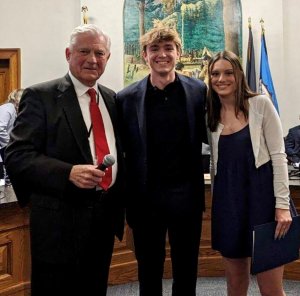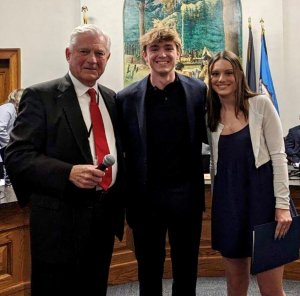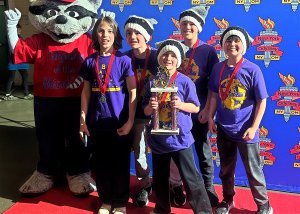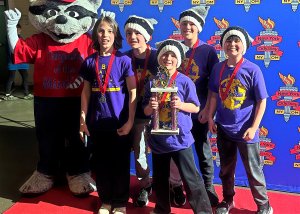About a month ago a former patient of mine set up an appointment to talk about her arthritic hands. She wondered if physical therapy would help. I immediately said yes. I said yes because I almost always think it’s worth trying and over the last 20 years I have seen countless arthritic patients improve their pain and function with proper guidance.
I have worked extreme cases like my 87 year old former football coach that didn’t want knee replacements even though he has severe degeneration. After finishing physical therapy he was able to resume walking in the woods and working out in a gym with mild pain.
There have also been mild examples like me. I had a time where I avoided stairs because my knees hurt going up and down them. I have mild arthritis. I worked out and improved my hips and core strength. I can still hear my knees every step, but I don’t avoid them anymore.
For some people they can improve their daily activities like getting up and down from chairs, in and out of cars, and up and down stairs. Others will see improvements in reaching overhead and grasping and using their hands. I typically say, “I am positive I can help you improve, but I am not sure how much improvement until we get started.”
Here are my top five myths regarding arthritis (specifically osteoarthritis):
Myths:
1. If it hurts I should stop.
This is simply not true. Pain is not our enemy, pain is our guide. Pain alerts us to pay attention to what we do but it does not mean avoid or stop doing something.
Pain that lasts means stop. For example, say your pain is a 4 out of 10 (this applies to any joint in your arm/hands, spine, legs/feet) When you perform an activity and your pain goes to an 8 out of 10...but when you stop the activity it returns to a 4 out of 10 within a few minutes...I say this is safe. Pain that goes up and comes back down quickly is what I call “Going to the pain...not through the pain,” and is safe to continue doing that particular activity.
But if your pain goes from a 4 out of 10 to a 6 out of 10 and 3 days later later it is still a 6 out of 10, then I recommend you stop doing that activity. This means that if the pain lasts...you should avoid doing it. It’s not so much the intensity of the pain, it is more about how long the increased pain lasts.
2. The pain in my joint is because it’s “bone on bone.”
For most people I have found that swelling and weakness are likely why they hurt. It is not to say that “bone on bone” doesn’t hurt, it is more that it is not the only reason. The other possibilities are swelling and weakness, both of which you can do something about.
If you have read my articles in the past you know that I am a huge advocate of compression for swollen joints. Now a days there are light compression garments for most body parts. Compression helps by helping our circulation. It also helps by reducing how much swelling can accumulate. I think it is especially effective because you can wear it throughout the day, whereas things like ice and heating pads can only be used for a limited time.
Another common reason for pain in our joints is “weakness” of the muscles that surround the joints. I have found the people that avoid activity have noticeable weakness and I think that is a major factor for their pain. It is common for people with lower back pain, for example, to have muscle atrophy of their back muscles. It is also common for people with hip arthritis to have weakness in their buttock muscles; knee arthritis typically results in hip weaknesses; hand/finger arthritis results in loss of grip strength.
Weakness is something you can deal with and improve. Having someone test you and guide you to improve your strength will in turn help to reduce your pain and improve your function.
3. Rest helps.
There are times where I also recommend rest...for example if you have major swelling in a joint and severe pain. But my type of rest is not complete rest. I want you to try things. I rarely recommend to avoid all activities and/or doing nothing. I think a better way to look at it is to avoid doing what makes your pain last and do everything that doesn’t make your pain last.
For example I believe that range of motion is safe. Safe does not mean it won’t hurt...it means it won’t injure you or make your condition worse. An arthritic joint may not feel good when we first start moving it, but as we move it more we will notice it feels better.
Moving more means two things to me. It means how far we move our joints, it should be to our maximum ability every time. It also means how often we move it. I recommend frequently. I prefer 3-5 repetitions every hour or 5-10 times a day instead of 30 repetitions twice a day.
Sitting for long periods of time is simply not going to help. Lying down for long periods of time during the day is not going to help. When in doubt, move about. If you are not sure what to do, start with basic range of motion. Move your joints...and move them often!
4. Stiffness/reduced motion is part of getting older
I hear on a weekly bases how patients think that their poor motion is because they are older. For most people their poor movements are from habits, more than their age. I am sure most of you have seen the pictures of the older women (and men) doing Yoga and exhibiting impressive range of motion. They are able to move through the range of motion because they move through the range of motion regularly, typically every day.
There are changes that happen to a joint with degeneration and it is true that after prolonged positions the initial movements can feel “stiff” and limited, but loss of joint range of motion is more out of avoidance and lack of use. The 87 year old football coach I mentioned earlier has X-rays that show “severe” degeneration, but, he has range of motion that is considered “within normal limits.”
Some of the stiffness and reduced motion people experience is tightness or restrictions in the muscles. Our muscles, like are joints, maintain their health through movement. The more we move our muscles the more able we are to move our muscles. Too often someone stops taking their joints through their normal range of motion and not only does their joint get “stiff,” but so do their muscles.
Habits are more likely to affect your lack of motion and stiffness. If your habit is to sit slouched all day your joints and muscles get very good at sitting slouched. If you walk with your toes pointing out then your hip joints and the muscles around the hip/buttock get good at that motion so when you move outside of that pattern it feels “stiff.” It may be hard to change these habits, but it is possible! The more you move the easier it is to move!
5. Surgery or medication is my only option...or... I’ve tried everything.
There certainly are times when surgery is the only option. And there are times where medication is needed to help so you can stay active. My point is they are not your only options.
Physical therapy has been shown in the research to be effective for helping alleviate pain and improve function. If you have tried PT without good results, go someplace else and try again!
Manual therapy (massage) and small group exercise programs have also been shown in the research to be helpful. It is worth trying different exercise groups like Yoga and Pilates as well as aquatic exercise groups. Nutrition and weight loss can also help. The bottom line is there are options.
It can help to have someone point out the pitfalls and obstacles that you may see and how to avoid them and get around them. I am certain that for most people reading this, moving more will help their joints and having someone help them find if they are weak and how to safely improve their strength will likely help even more.
If you would like an assessment to see if we can help call 518-306-6894.




























 How to resolve AdBlock issue?
How to resolve AdBlock issue? 









